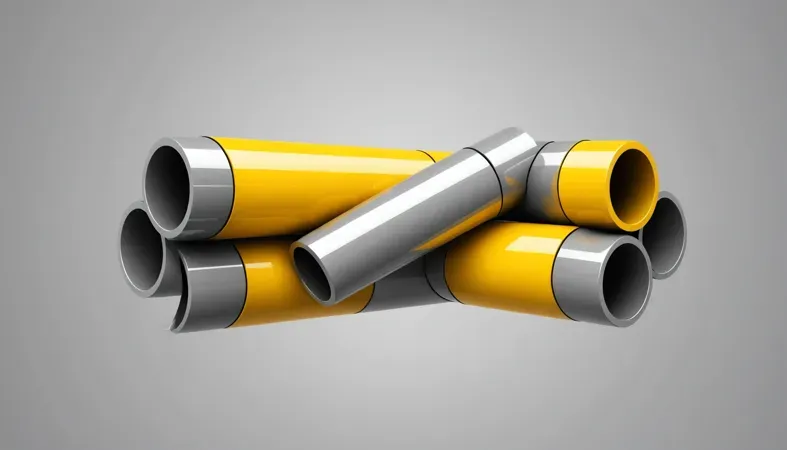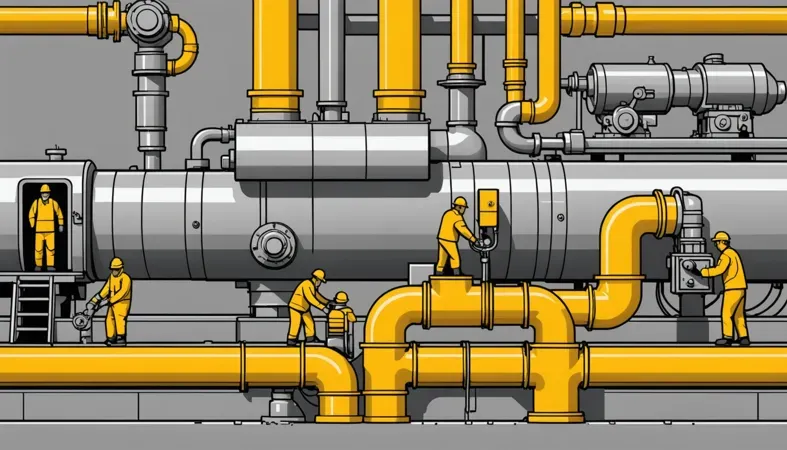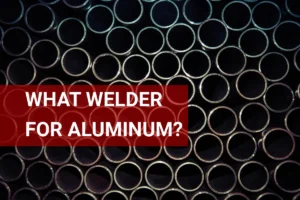How to Join Two Steel Pipes Without Welding? Methods, Steps, Benefits
Published on: February 14, 2025 | Last modified: March 4, 2025
By: Joe Carter
Pipes are long cylindrical tubes used to transport fluids or gases. They come in different materials, sizes, and thicknesses.
People often ask us how to join two steel pipes without welding. It’s crucial to find an effective method, especially in situations where welding isn’t an option. I’ve seen it make a big difference in various projects, ensuring safety and reliability.
In this guide, we’ll explore essential steps for joining steel pipes, the different methods available, what materials you’ll need, and the precautions to take. We’ll also discuss common problems, aftercare, and the benefits of knowing how to join metal tubes without welding. It’s all about making your work easier and more efficient!
Contents
- How to Join Two Steel Pipes Without Welding?
- What Are Pipes?
- Types Of Pipes for Joining Without Welding
- Essential Prerequisites to Get Started
- Steps for Joining Two Steel Pipes Without Welding
- Precautions
- Types Of Joining Methods for Steel Pipes
- Factors That Affect Joining Steel Pipes Without Welding
- Typical Problems to Be Aware Of
- Why This is Worth It: Advantages
- Where Are Joining Steel Pipes Used?
- Exploring Innovative Alternatives for Joining Steel Pipes
- Frequently Asked Questions (FAQs)
- Conclusion
- References
How to Join Two Steel Pipes Without Welding?
Pipes are cylindrical tubes used to transport liquids or gases. To join two steel pipes without welding, you can use mechanical connectors or clamps. This method is easy, typically requiring sizes from ½ inch (1.27 Cm) to 6 inches (15.24 Cm). It’s ideal for DIY projects but may not support heavy loads.
What Are Pipes?
Pipes are hollow cylindrical tubes made from materials like metal, plastic, or concrete. They come in various diameters and lengths, typically ranging from 15 mm (0.6 Inches) to 300 mm (11.8 Inches) or larger. Pipes are used in plumbing, construction, and HVAC (Heating, Ventilation, and Air Conditioning) systems to transport liquids or gases. For instance, steel pipes have a standard pressure rating of up to 800 psi (5,500 Kpa), showcasing their strength and durability.
When you need to join two steel pipes without welding, several methods can save time and effort. I’ve used mechanical couplings and compression fittings. These solutions are quick, reliable, and don’t require specialized welding equipment. You can often install them yourself, which is very handy.
I’ve heard from friends how they linked steel tubing without welding. They opted for slip-on fittings, making the connection simple and efficient. The ease of joining pipes without welding can really speed up a project, especially for connecting stainless steel. It’s impressive what you can achieve without flames or sparks!
Types Of Pipes for Joining Without Welding
-
Steel Pipes
Steel pipes are strong and durable, suitable for high-pressure systems. To connect them without heat, use mechanical connectors that fit snugly over the pipe ends, often secured with bolts or clamps.
If welding is carried out near glass components, it is crucial to address any spatter issues effectively. You can explore methods on fixing welding spatter on glass for optimal results.
-
Plastic Pipes
Plastic pipes, like PVC, are lightweight and easy to handle. You can join them using solvent cement or push-fit connectors. Clean the pipe ends, apply the solvent, and push them together for a watertight seal. Exploring welding techniques can expand your knowledge on how safe it is to observe welding from afar.
-
Galvanized Pipes
Galvanized pipes are coated to prevent rust, making them ideal for water lines. Connect them with threaded fittings by wrapping Teflon tape around the threads and screwing on the fitting tightly to prevent leaks. When it comes to tasks like welding thin metal sections of galvanized pipes, applying the correct technique can significantly enhance the durability and stability of your water lines. For more details, you might find this guide on welding thin metal incredibly useful.
-
Copper Pipes
Copper pipes are widely used for plumbing due to their corrosion resistance. Join them using compression fittings by sliding the fitting onto the pipe and tightening the nut firmly for a secure connection. Welders often work with various metals and face unique challenges that might necessitate medical imaging, should the need arise. It’s vital to consider MRI eligibility for welders when planning such procedures.
-
PVC Pipes
PVC pipes are popular for their versatility and cost-effectiveness. Connect them using a coupling by applying primer to the pipe ends, followed by glue, and then pushing them into the coupling.
We’ve wrapped up the different types of pipes for non-welding connections here. Next up, we’ll look at necessary prerequisites to begin.
Essential Prerequisites to Get Started
What do you need to begin?
- KLEMP pipe fittings: You need high-quality fittings like KLEMP 40mm and 50mm clamps. They’re crucial for securely connecting steel pipes.
- Metal Pipe Connector Joint: Get durable connectors such as tees or elbows from your local hardware store. They’re essential for angle changes, ensuring a precise fit.
- PVC or Rubber Gasket: Use gaskets specifically designed for 2-inch (50mm) pipes to prevent leaks. They provide a tight, secure seal for your project.
- Thread Sealant: A product like Loctite PST 567 ensures leak-proof connections. It’s ideal for threaded joints, preventing long-term issues.
That covers the important prerequisites for getting started. Let’s now take a look at the steps for joining two steel pipes without welding.
Steps for Joining Two Steel Pipes Without Welding
Here are the steps to effectively join two steel pipes without welding.
-
Measure Pipe Dimensions
Start by measuring the outer diameter of both steel pipes. Use a caliper for accuracy; this tool ensures precise readings in millimeters (Mm) or inches (In.), typically ranging from 1 in (25 Mm) to 4 in (102 Mm) for common pipe sizes. Note the wall thickness too—it’s essential for a snug fit. I once rushed this measurement, resulting in a poorly fitting joint.
Measure the length of the pipes to determine the required overlap. A good rule of thumb is 1 to 2 in (25 to 50 Mm) for stability. Misjudging your numbers can create issues later. Trust me, precision pays off!
-
Select Appropriate Joining Method
Choose a joining method that suits your project. You can use mechanical fittings, such as KLEMP fittings, or opt for adhesives for a permanent bond. If using mechanical fittings, ensure they’re rated for the pressure and type of pipes. For example, a threaded fitting can handle up to 150 PSI (Pounds Per Square Inch). Determine which method holds best for your materials.
For clamps, a heavy-duty option can apply up to 2,400 N (Newtons) of force, creating a robust joint. I’ve seen people underestimate this; always choose fittings designed for your specific load. The right choice can make or break the project!
-
Prepare Pipe Ends
Clean the ends of both pipes thoroughly. If there’s rust, grease, or debris, use a wire brush or grinder to remove it. Cleaning ensures a good seal and bond with whatever method you choose. I recommend using a degreaser afterward for optimal results. This step is often overlooked but is crucial!
Next, bevel the pipe edges if necessary; it helps create a better joint for mechanical fittings or adhesives. A 30-degree angle on the bevel is standard. Smooth edges ensure solid contact during the joining process. I once skipped this, resulting in a weak junction!
-
Secure the Connection
Apply your selected joining method now. If you’re using KLEMP fittings, align both pipes and insert them into the fitting. Tighten bolts to the manufacturer’s specified torque—around 10 N·m (Newton-meters) is a safe start. Adjust as needed, but don’t overtighten; you could crack the fitting.
If using adhesive, follow the instructions closely. Clamp the fitting in place and let it cure for the recommended time, which can range from 30 minutes to several hours, depending on the adhesive. Each situation calls for different drying times, so check the specifications!
-
Test the Joint
Once everything’s set, check your work. Gradually pressurize the system and watch for leaks. Start with lower pressure—around 10-15 PSI (0.68-1.03 Bar). This initial test verifies system integrity before you ramp up to working pressure. Monitor all joints and fittings during this process.
If you spot any leaks, you’ll need to retighten or replace the fittings. I find it’s better to be cautious here. If you catch an issue early, you can save yourself a lot of trouble later!
We’ve wrapped up the procedures for connecting two steel pipes without welding here. Next up, we’ll look at safety measures.
Precautions
Let’s quickly review essential safety tips for joining pipes.
- Wear Safety Goggles: Protect your eyes from debris. I recommend 3M Clear Safety Glasses for visibility.
- Use Gloves: Avoid cuts when handling steel. I find Mechanix Wear Original Gloves provide great grip and control.
- Ventilate Workspace: Ensure fresh air circulation when using adhesives. Maintain 6–10 air changes per hour to reduce fumes.
- Inspect Pipes: Check for rust and contaminants before joining. Clean with a wire brush suitable for the steel type.
Always prioritize safety; it gives you peace of mind while working.
We covered safety measures for working with steel pipes. Next, we will explore different joining methods for steel pipes.
Types Of Joining Methods for Steel Pipes
Let’s look at how to join two steel pipes without welding. We’ll cover Mechanical Couplings, Flanged Joints, Soldering, Compression Fittings, and Epoxy Adhesive.
-
Mechanical Couplings
Mechanical couplings use clamps or fittings to connect two pipes. This method works well for various sizes, such as 2-inch (50 Mm) or larger. They provide a secure connection that can be easily removed if needed.
-
Flanged Joints
Flanged joints connect pipes using flat surfaces with holes for bolts. This method is common for larger pipes, around 4-inch (100 Mm) and up. Flanged connections allow easy access during maintenance.
-
Soldering
Soldering uses heat to melt filler material that joins pipes. You can think of it as metal glue. This method is effective for small diameters, typically under 2-inch (50 Mm).
-
Compression Fittings
Compression fittings create a seal between pipes using a nut and ring. They’re easy to install and work with various materials like copper or plastic. These fittings often come in sizes like 1-inch (25 Mm) and can handle moderate pressure.
Here’s an insight I’ve gained: Compression fittings are my go-to for DIY projects. They’re user-friendly and don’t require extensive tools, making them perfect for quick fixes!
-
Epoxy Adhesive
Epoxy adhesive bonds two pipes through a strong chemical reaction. It works well for small to medium repairs and resists water and many chemicals. You can expect cure times as quick as 24 hours for a solid bond.

Factors That Affect Joining Steel Pipes Without Welding
What factors influence your options for connecting steel pipes without welding?
-
Pipe Diameter
The diameter of the pipes affects the joining method. Larger pipes, like 8 inches (20.32 Cm) or more, often need specialized fittings, such as KLEMP fittings, to ensure a tight seal.
-
Material Compatibility
Not all metals bond well. Mixing aluminum with steel can weaken your joint, especially when joining sheets or tubing without welding.
-
Connection Method
Choosing the right connection method is crucial. I once used compression fittings on a high-pressure system, and it failed. Compression joints work for low pressure, while flanges or threaded connections typically handle higher pressures better.
-
Environmental Conditions
Humidity and temperature impact your joints. Extreme temperature changes can cause metal to expand or contract, compromising your connections.
-
Required Pressure Ratings
Your application determines the pressure requirements. For instance, if you need to connect pipes holding 150 psi (10.34 Bar), use reliable methods like heavy-duty clamps or specialized fittings.
Typical Problems to Be Aware Of
Let’s look at specific issues related to pipes.
-
Leakages at Joints
Pipes can leak at joints. You can identify this issue by noticing water spots or wet surfaces. To fix it, ensure proper torque settings and use a sealant to make joints airtight.
-
Corrosion Issues
Pipes might develop corrosion over time. I once ignored rust on copper pipes—don’t do that! Clean the pipes thoroughly and apply corrosion-resistant coatings for protection.
-
Improper Fit Between Pipes
Pipes can fit improperly, causing future maintenance headaches. Measure pipe diameter accurately and adjust angles to ensure tight connections. Use flexible fittings if needed for adjustments.
-
Material Weakness
Pipes may have issues due to material weakness. Inspect for cracks or surface imperfections. When discovered, replace the affected segment to prevent leaks or collapse.
-
Difficulty in Pipe Alignment
Pipes may have alignment issues, leading to stress concentrations. Use alignment tools during installation to keep pipes straight. If misaligned, readjust until perfectly aligned.
Why This is Worth It: Advantages
The biggest perk of joining two steel pipes without welding? It saves you time and money. Friends have told me how well it worked for their DIY projects, and they were amazed at the speed.
Additionally, using methods like mechanical fittings or adhesive bonding means less hassle. You get improved safety, reduced risk of distortion, easier repairs, and a cleaner finish.
Where Are Joining Steel Pipes Used?
People often use methods to join pipes without welding in gas distribution systems. However, joining steel pipes has many applications, including:
- Pressure Testing: Connects pipes in hazardous environments, allowing safe flexibility. It’s popular in the oil and gas sectors.
- Water Supply Systems: Mechanical couplings join pipes, which is common in municipal installations due to easy repairs.
- Racing Car Exhausts: Steel pipes join without welding for weight savings and adjustability, widely used by enthusiasts and teams.
- Refrigeration Lines: Techniques like flare fittings connect pipes efficiently, crucial for HVAC systems and enhancing reliability and maintenance access.

Exploring Innovative Alternatives for Joining Steel Pipes
Let’s dive into some innovative methods for joining steel pipes without welding that you may not have considered yet.
Advanced Joining Techniques
-
Cold Expandable Fittings
Cold expandable fittings involve a unique method where the pipe is expanded and then the fitting is inserted. As the pipe contracts, it creates a tight seal. This method suits pipes from 1 inch (25 mm) to 4 inches (100 mm) and offers high pressure resistance, reaching up to 300 psi (2,068 kPa).
-
Flanged Connections
Flanged connections involve attaching flanges to the ends of pipes, bolting them together for a tight seal. Ideal for pipes larger than 4 inches (100 mm), they’re easy to disassemble for maintenance. They can handle high-pressure systems, typically rated for up to 150 psi (1,034 kPa).
-
Interlocking Mechanical Joints
These joints feature a unique design where pipe ends are shaped to interlock. This method is quick to install and doesn’t require special tools, making it a favorite among many DIY enthusiasts. They are typically used for pipes with diameters of up to 6 inches (150 mm).
Comparison Table of Pipe Joining Methods
| Method | Pressure Rating (psi) | Diameter Range (inches) | Tools Required |
|---|---|---|---|
| Cold Expandable Fittings | Up to 300 psi (2,068 kPa) | 1 to 4 inches (25 to 100 mm) | Expansion tool |
| Flanged Connections | Up to 150 psi (1,034 kPa) | 4 inches and above (100 mm+) | Wrench for bolts |
| Interlocking Mechanical Joints | Up to 200 psi (1,379 kPa) | Up to 6 inches (150 mm) | None |
Frequently Asked Questions (FAQs)
Now let us look at some common questions I typically get asked.
How Do You Bond Steel to Steel Without Welding?
Yes, you can bond steel to steel without welding using adhesives like epoxy or specialized welding alternatives. These options provide a strong bond, often exceeding 4,000 psi (27.6 Mpa) for epoxies, and they’re easy to use. Plus, they withstand various temperatures, making them versatile for most applications.
How to Connect Two Metal Pipes Without Threads?
You can connect two metal pipes without threads using compression fittings or hose clamps. Compression fittings work by creating a tight seal as you tighten the nut, while hose clamps fasten around the pipe to hold it securely. Both methods are quick, easy, and cost-effective.
What is the Best Way to Join Tubing?
The best way to join tubing depends on your specific materials and requirements. For thin-walled tubing, you might prefer adhesive bonding, while thicker walls often benefit from mechanical fasteners or clamps. Each method provides unique advantages, ensuring strong joints tailored to your project.
How Do You Connect Two Pieces Of Pipe Together?
You can connect two pieces of pipe together using couplers, sleeves, or adhesives. Couplers slide over the ends of the pipes, creating a secure fit, while adhesives can create a strong, leak-proof connection. These methods ensure a solid bond without the need for welding. While these approaches are widely used, knowing the legality of welding a car frame is essential for making informed decisions regarding vehicle repairs.
How to Join Aluminum Without Welding?
To join aluminum without welding, you can use rivets or adhesives, specifically formulated for metal bonding. Riveting provides mechanical strength, while adhesives offer seamless connections that can endure tough conditions. Both techniques are effective and widely used in various industries, making them great alternatives to welding by metals.
Conclusion
That’s everything I wanted to share with you. We covered different pipe types like steel, aluminum, and stainless steel, essential prerequisites for joining, and various methods such as using clamps, adhesive bonding, and mechanical fittings. We also touched on precautions, inspection tips, advantages, and the importance of knowing common problems.
So, how to join two steel pipes without welding? You can do this securely using epoxy adhesives or mechanical connectors like couplings. Remember the key details: choose the right pipe type, prepare surfaces, and follow proper steps. Wishing you success in your welding projects and happy joining.
For a comprehensive range of welding articles and resources, head over to our homepage: What is Welding. It’s your hub for all the information you may need!
References
- Lincoln Electric. (2020). The Procedure Handbook of Arc Welding (15th ed.). Cleveland, OH: Lincoln Electric Company.
- Blodgett, O. W. (1996). Design of Welded Structures. Cleveland, OH: James F. Lincoln Arc Welding Foundation.
Joe Carter is a retired welding professional with over 40 years of hands-on experience in the industry, spanning ship repair, structural welding, and even underwater projects. Joe is a master of MIG, TIG, and Stick welding. Passionate about mentoring the next generation of welders, Joe now shares his decades of expertise and practical insights to help others build rewarding careers in welding.
Adhesive Bonding, Construction, DIY Plumbing Solutions, How To Join Steel Pipes, Mechanical Connectors, Non-Welding Methods, Pipe Joining Techniques, Safety Tips, Steel Pipe Assembly, Welding, Welding Techniques







